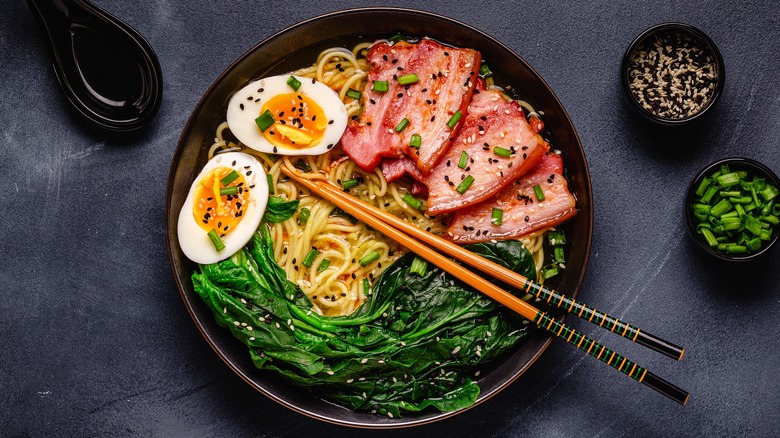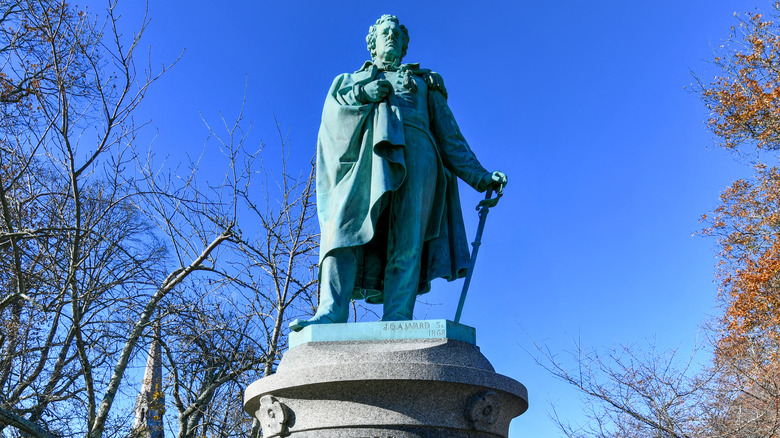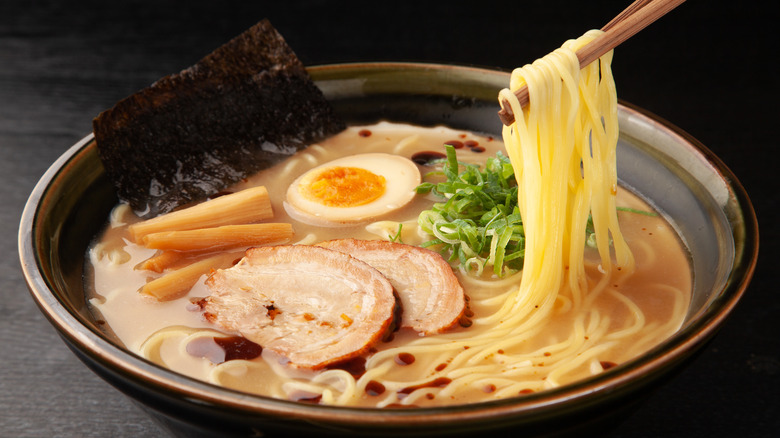How The US Navy Accidentally Helped Create Modern Ramen
Today, ramen in its many styles, is one of Japan's international symbols, with 121.2 billion global servings in 2022 alone. In addition to its general popularity, the dish has all sorts of uses; there's even a Japanese tourist train fueled by ramen. The roots of ramen date back centuries; there's evidence ramen noodles descend from a type of noodle known as keitai-men, which had existed for centuries (but with limited popularity, especially among the general population). But it wasn't until the late 1800s that those noodles were combined with Japanese and Chinese cooking techniques to create the ramen we know now.
But ramen also wouldn't exist without a bunch of U.S. warships from the 1850s. (It's important to note that ramen was not invented by the U.S. Navy or any other American; it's a Japanese creation through and through, with some assistance from Chinese cooking ideas). However, the actions of the Navy during one of the most formative events in Japanese history — the arrival of Commodore Matthew Perry's black ships — ultimately had a butterfly effect on its creation a few decades later. To understand why, you need to understand how Japan was closed off for centuries and how Perry's arrival opened the floodgates for immigration and international trade.
Japan was closed off for centuries until the Navy arrived
In the latter half of the 16th century, Japan was open to, if not universally welcoming, European Catholic missionaries. In the early 17th century, though, a series of edicts were issued by shogun Tokugawa Iemitsu that collectively formed a policy known as sakoku. These included prohibiting Christianity in 1614, forbidding Japanese citizens from entering and leaving in 1635, and barring the Portuguese from Japan in 1639. Together, they effectively sealed the country's borders to the outside world (apart from a small Dutch trading outpost in Nagasaki). This would hold for almost the entirety of the Edo Period (1603 to 1868) — until the arrival of the U.S. Navy.
In 1853, U.S. Commodore Matthew Perry arrived in Edo Bay (the area around modern-day Tokyo and Yokohama) with a small fleet of steamships the Japanese came to refer to as "black ships" for the smoke they gave off. Perry's mission to open Japan to trade by any means necessary (including intimidation by firing a bunch of blank rounds at one point) was successful, culminating in the country fully opening its ports (and thus opening itself up to immigration) in 1859.
Ramen was as a fusion of Chinese and Japanese cooking ideas
In the decades after Perry's arrival, Chinese immigrants — particularly students — began to arrive in the country in increasing numbers. They brought with them a love of Chinese broth-based noodle dishes that would fuse with Japanese cooking concepts into modern ramen. In addition to some form of keitai-men noodles, the inclusion of dashi, Japan's unique soup stock, and various toppings turned ramen into what it is today. The first dedicated Japanese ramen restaurant, Rairaiken, opened in 1910, and the country hasn't looked back since.
So, while there may be differences between American and Japanese ramen, its modern form wouldn't exist without one country pointing some big guns at the other and telling them to open up because they had things to sell them. Next time you enjoy a nice bowl of ramen, be sure to thank Commodore Matthew Perry.


